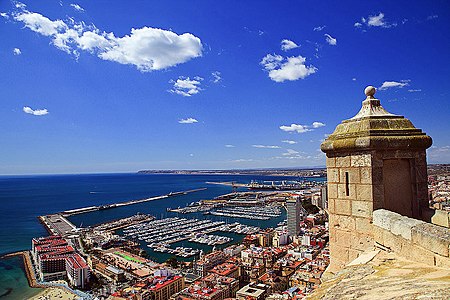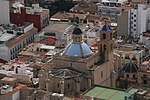Alicante
AlicanteAncient Greek archaeological sites in SpainCommons link is defined as the pagenameGreek colonies in IberiaMediterranean port cities and towns in Spain ... and 4 more
Municipalities in the Province of AlicanteSeaside resorts in SpainTourism in SpainWikipedia pages move-protected due to vandalism

Alicante (Valencian: Alacant) is a city and municipality in the Valencian Community, Spain. It is the capital of the province of Alicante and a historic Mediterranean port. The population of the city was 337,482 as of 2020, the second-largest in Valencian Community.
Excerpt from the Wikipedia article Alicante (License: CC BY-SA 3.0, Authors, Images).Alicante
Plaza del Abad Penalva, Alicante Centro Histórico
Geographical coordinates (GPS) Address Nearby Places Show on map
Geographical coordinates (GPS)
| Latitude | Longitude |
|---|---|
| N 38.345277777778 ° | E -0.48305555555556 ° |
Address
La Piazza
Plaza del Abad Penalva
03001 Alicante, Centro Histórico
Valencian Community, Spain
Open on Google Maps










